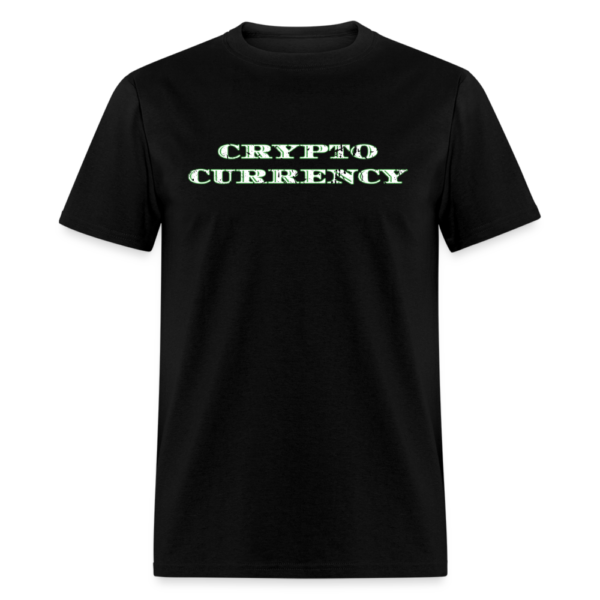Your cart is currently empty!
Tag: financial innovation
Gold to Crypto: The Journey from the Gold Standard to Modern Stablecoins
The world of money has evolved dramatically over time. From glittering gold coins that once underpinned entire economies to digital currencies that now power global transactions, the journey of monetary systems is both fascinating and complex. In this post, we explore the history of the gold standard, the pivotal changes that reshaped economic policy, and how today’s stablecoins are striving to replicate the stability and trust once offered by gold. Read on for a deep dive into monetary evolution, and don’t forget to comment and share your thoughts below!
What Was the Gold Standard?
The gold standard was a monetary system where a country’s currency value was directly linked to a specific amount of gold. In essence, each unit of currency could be exchanged for a fixed weight of gold. This system provided a clear measure of value, ensuring that money wasn’t subject to the whims of political decisions or rampant inflation. Because gold was scarce and widely valued, it became the benchmark for economic stability, fostering trust in both domestic and international trade.
In the 19th century, many countries adopted the gold standard to anchor their currencies. The approach brought predictability to exchange rates, reduced currency fluctuations, and allowed economies to flourish under a shared standard of value. While the gold standard’s promise was to maintain monetary discipline, it also imposed strict limitations on the ability of governments to manage their economies during times of financial distress.
The Historical Evolution of the Gold Standard
Early Adoption and Global Spread
The origins of the gold standard can be traced back to earlier practices of using precious metals as a medium of exchange. However, it wasn’t until the 19th century that governments began officially linking their currencies to gold. The United Kingdom, with its expansive colonial trade, became one of the first to adopt the system, setting a precedent for other nations.
By the latter half of the 1800s, most of Europe and parts of the Americas had aligned their currencies with a fixed amount of gold. This period was marked by increased international trade and investment, as well as by a mutual trust built upon a shared understanding of monetary value. The predictability provided by the gold standard facilitated cross-border commerce and laid the groundwork for modern financial markets.
Crisis, Change, and the Demise of the Gold Standard
Despite its benefits, the gold standard wasn’t without its challenges. The rigid connection to gold meant that countries were unable to adjust their money supply in response to economic shocks. During periods of recession or war, the inflexibility of the system contributed to prolonged economic hardship. In times of crisis, governments found themselves constrained by the need to maintain gold reserves rather than stimulate their economies.
The first major shift occurred during the early 20th century. World War I forced many nations to suspend the gold standard as they required increased spending for the war effort. Post-war, attempts were made to restore the system, but the interwar period was characterized by economic instability and competitive devaluations. The eventual abandonment of the gold standard by many countries during the 1930s highlighted its limitations in a rapidly changing global economy.
The most definitive break from the gold standard came in the early 1970s. With mounting pressures from inflation and a growing need for flexible monetary policy, the United States – which had played a central role in the global financial system – officially ended the convertibility of the US dollar to gold. This decision marked the complete transition to fiat currencies, where money’s value is determined by government regulation and market dynamics rather than a fixed physical asset.
Economic Effects of the Gold Standard and Its Demise
Stability Versus Flexibility
The gold standard brought with it an era of stability, as currency values were predictable and internationally consistent. This predictability helped fuel economic growth and provided a solid foundation for international trade. Merchants and investors alike could trust that the value of their money would not dramatically fluctuate overnight, fostering a climate of economic confidence.
However, this stability came at a cost. The gold standard’s inflexibility meant that governments could not easily expand their money supply during economic downturns. When crises hit, economies could suffer from deflationary pressures, leading to reduced spending, lower wages, and higher unemployment rates. The inability to adjust monetary policy during such times often deepened and prolonged recessions.
The Transition to Fiat Currency
The shift away from the gold standard was driven by the need for greater flexibility in monetary policy. With fiat currency – money that is not backed by a physical commodity but by the government’s decree – central banks gained the ability to respond swiftly to economic crises. This newfound flexibility allowed for targeted interventions such as interest rate adjustments, quantitative easing, and fiscal stimulus measures that could mitigate the impacts of economic downturns.
While fiat currency has its drawbacks, including the risk of inflation and mismanagement by central authorities, it also offers the adaptability required for modern, dynamic economies. The balance between maintaining stability and providing the means to address unforeseen challenges remains a central debate in economic policy.
The Emergence of Stablecoins in the Digital Age
As technology transformed the financial landscape, digital currencies began to emerge. Bitcoin, the pioneering cryptocurrency, introduced the world to blockchain technology and a decentralized model of money. However, cryptocurrencies like Bitcoin are known for their volatility—a stark contrast to the stability that the gold standard once provided.
Enter stablecoins. These are a new breed of digital assets designed to maintain a steady value by being pegged to traditional fiat currencies or, in some cases, even to gold. By doing so, stablecoins aim to combine the best aspects of both worlds: the security and decentralization of blockchain technology with the stability of established monetary systems.
How Do Stablecoins Work?
Stablecoins can be broadly categorized into three types:
- Fiat-collateralized stablecoins: These coins are backed by reserves of fiat currency held in bank accounts. For every unit of stablecoin issued, a corresponding amount of fiat currency is held in reserve. This model ensures that the stablecoin’s value remains closely tied to its fiat counterpart.
- Crypto-collateralized stablecoins: In this model, stablecoins are backed by other cryptocurrencies. Since cryptocurrencies can be volatile, these systems often over-collateralize to account for market fluctuations.
- Algorithmic stablecoins: Rather than relying on collateral, algorithmic stablecoins use smart contracts and algorithms to control the supply and demand, maintaining price stability through automated adjustments.
Each of these models has its own advantages and challenges. While fiat-backed stablecoins are generally viewed as the most reliable, they require trust in centralized reserves. On the other hand, algorithmic models offer a more decentralized approach but can be more complex and potentially riskier in volatile markets.
Stablecoins Emulating the Gold Standard
At their core, stablecoins share a common goal with the gold standard: to provide a stable and trustworthy medium of exchange. Just as gold once served as a safeguard against economic uncertainty, stablecoins strive to offer a consistent value in the turbulent world of cryptocurrencies.
Modern stablecoins are attempting to recreate the trust that gold once provided by ensuring that each coin is backed by tangible assets or robust algorithmic mechanisms. This approach helps protect users from the extreme price fluctuations that are common in other digital assets, making stablecoins an attractive option for transactions, remittances, and even as a store of value.
The concept of tying a digital currency’s value to a stable asset echoes the philosophy of the gold standard, but with a twist that suits today’s technological landscape. As the global economy becomes increasingly digital, the lessons learned from the gold standard’s history continue to inform how we think about monetary stability and trust.
Comparing Gold and Stablecoins: Lessons from the Past and Future Outlook
The Enduring Appeal of Gold
Gold has been revered for centuries as a symbol of wealth and security. Its scarcity, durability, and universal acceptance have made it a reliable store of value. Even today, central banks hold significant amounts of gold as a hedge against economic uncertainty and inflation. The tangible nature of gold provides a sense of security that digital assets are still striving to achieve.
The Digital Evolution with Stablecoins
Stablecoins represent the evolution of money in a digital era. They are designed to address the volatility inherent in cryptocurrencies while leveraging the benefits of blockchain technology, such as transparency, security, and decentralization. By anchoring their value to stable assets, stablecoins offer a bridge between the old and the new, echoing the stability once provided by gold.
One of the most promising aspects of stablecoins is their potential to enhance global financial inclusion. Digital currencies can be accessed by anyone with an internet connection, potentially providing financial services to millions who are underserved by traditional banking systems. As regulatory frameworks evolve and technology improves, stablecoins could play a crucial role in shaping the future of money.
Bridging the Gap Between Past and Present
The journey from the gold standard to stablecoins is more than just a transition from physical to digital; it is a reflection of our continuous quest for stability in an ever-changing economic landscape. Both systems aim to mitigate uncertainty, promote trust, and provide a reliable medium of exchange. While the methods and technologies differ, the underlying principles of economic stability remain remarkably similar.
The key takeaway is that while we have moved on from gold as the primary standard, its legacy endures. Modern financial systems, including stablecoins, draw inspiration from the gold standard’s strengths while adapting to the demands of a digital world. This convergence of historical wisdom and innovative technology may well define the next chapter in the evolution of money.
Looking to the Future: What’s Next for Money?
As we look ahead, the intersection of technology and monetary policy promises to bring further innovations. The development of central bank digital currencies (CBDCs) is one example of how governments are exploring new ways to combine the benefits of traditional monetary systems with the efficiencies of digital technology. These digital currencies could coexist with stablecoins, offering consumers and businesses a diverse array of options for secure and efficient transactions.
Moreover, the evolution of stablecoins is likely to spark further discussions on regulatory oversight, transparency, and consumer protection. As the digital economy expands, establishing robust frameworks will be essential to ensure that these new monetary tools remain stable and trustworthy, much like gold once did.
The financial landscape is at a crossroads. With the rise of blockchain technology and digital currencies, we are witnessing a fundamental rethinking of what money is and how it should function in our modern society. Whether you are a seasoned investor, a technology enthusiast, or simply curious about the future of money, understanding the journey from the gold standard to stablecoins provides valuable insights into both the history and the future of our economic systems.
Conclusion: Embracing the Legacy and the Future
The story of money is one of continuous evolution. The gold standard provided a foundation of stability that helped shape the global economy for over a century. Its eventual replacement by fiat currency allowed for greater flexibility, paving the way for modern monetary policy. Today, stablecoins are emerging as a new solution to an age-old problem: how to maintain trust and stability in a rapidly changing economic environment.
By emulating the principles of the gold standard, stablecoins offer the promise of a balanced, secure, and efficient digital currency ecosystem. They remind us that while technology evolves, the core values of economic stability and trust remain timeless. As we navigate the future of money, both historical insights and modern innovations will continue to guide us in building a resilient financial system.
We invite you to join the conversation—share your thoughts on the transition from gold to crypto, and let us know how you see the future of money unfolding. Your insights and opinions are valuable, so please leave a comment and share this post with friends and colleagues who are passionate about economics and digital currencies.
Vintage Crypto Currency Green Money Art Unisex Classic T-Shirt
$13.99Vintage Crypto Currency Green Money Art Unisex Classic T-Shirt. “Show off your style and love for digital currency with this vintage crypto currency green money art unisex classic t-shirt! Perfect for crypto enthusiasts who want to combine fashion and finance.”
-

Hungry and Humble Football Player Flapping Arms Touchdown Celebration Unisex Classic T-Shirt #philly
$19.99 Select options This product has multiple variants. The options may be chosen on the product page -

Africatown in Philly Phrase Unisex Classic T-Shirt
$13.99 Select options This product has multiple variants. The options may be chosen on the product page -

Vintage Funny Cat Selfie UFO Alien Invasion Unisex Classic T-Shirt
$13.99 Select options This product has multiple variants. The options may be chosen on the product page -

Vintage Philly Underdogs German Shepherds Unisex Classic T-Shirt
$9.99 Select options This product has multiple variants. The options may be chosen on the product page -

Voxel Art Hockey Players Unisex Classic T-Shirt
$19.99 Select options This product has multiple variants. The options may be chosen on the product page
————————————————
We use AI GPT Chatbots to help with our content and may get some things wrong.
————————————————-
Ripple’s USD Stablecoin: A Game-Changer for Crypto Investors #RLUSD #XRP
Ripple, a key player in the blockchain and cryptocurrency industry, has announced that trading for its new stablecoin, Ripple USD (RLUSD), will commence on Tuesday. The launch follows regulatory approval from the New York State Department of Financial Services (NYDFS) earlier this month, marking a significant milestone for the company and the broader crypto market. Investors and traders now have a new opportunity to diversify their portfolios with a U.S. dollar-backed stablecoin that bridges the Ethereum blockchain and the XRP Ledger.
What Is RLUSD?
Ripple USD (RLUSD) is a stablecoin designed to maintain a 1:1 peg to the U.S. dollar. This stability is achieved through robust backing by dollar reserves, ensuring it remains a low-volatility asset ideal for transactions, payments, and trading. Unlike traditional cryptocurrencies such as Bitcoin or Ethereum, whose values can fluctuate dramatically, RLUSD provides a secure way to hold and transfer value.
What sets RLUSD apart is its dual functionality. The stablecoin will operate seamlessly across two major blockchain networks: the Ethereum blockchain and the XRP Ledger (XRPL). This interoperability is expected to enhance its utility, offering faster transactions, reduced fees, and greater accessibility for users globally.
The Road to Regulatory Approval
The NYDFS’s approval of RLUSD underscores the growing acceptance of stablecoins within regulated financial frameworks. Ripple’s commitment to transparency and regulatory compliance played a crucial role in securing this approval. This green light not only adds credibility to RLUSD but also reinforces Ripple’s reputation as a trustworthy entity in the evolving world of digital finance.
The approval process required rigorous audits of Ripple’s financial reserves, operational protocols, and security measures. By meeting these stringent requirements, Ripple has set a high standard for other stablecoin issuers, signaling a new era of accountability in the crypto space.
Why RLUSD Matters for Investors
Enhanced Liquidity and Stability
Stablecoins like RLUSD provide a safe haven for investors looking to avoid the volatility often associated with cryptocurrencies. With its U.S. dollar backing, RLUSD offers stability and predictability, making it an attractive option for portfolio diversification and risk management.
Cross-Chain Functionality
The ability to operate on both the Ethereum blockchain and the XRP Ledger is a major advantage. Ethereum’s vast ecosystem of decentralized applications (dApps) and smart contracts, combined with XRPL’s efficiency and low transaction costs, ensures that RLUSD can serve a wide range of use cases. Whether it’s for decentralized finance (DeFi) projects, remittances, or day-to-day payments, RLUSD’s cross-chain functionality is a game-changer.
Regulatory Confidence
The NYDFS’s approval gives RLUSD a competitive edge in the stablecoin market. Regulatory compliance is becoming increasingly important as governments and financial institutions seek to mitigate risks associated with cryptocurrencies. By aligning with regulatory standards, RLUSD provides investors with a secure and compliant asset to trade and hold.
Initial Availability and Expansion Plans
At launch, RLUSD will be available on select global cryptocurrency exchanges, providing immediate access to investors around the world. Ripple has also announced plans to expand RLUSD’s availability to additional platforms in the coming weeks, ensuring broader adoption and liquidity.
Investors can look forward to RLUSD being integrated into various DeFi protocols, payment systems, and trading platforms. This strategic rollout will enhance its accessibility and utility, further solidifying its position as a leading stablecoin.
Implications for the Broader Crypto Market
The launch of RLUSD comes at a pivotal time for the cryptocurrency market. Stablecoins are increasingly seen as essential tools for bridging the gap between traditional finance and digital assets. By providing a stable store of value, RLUSD can facilitate greater adoption of cryptocurrencies among mainstream users and institutions.
Moreover, RLUSD’s dual-chain functionality could set a precedent for future stablecoins, encouraging innovation and collaboration between different blockchain networks. This interoperability has the potential to drive greater efficiency and scalability in the crypto ecosystem.
How to Trade RLUSD
Trading RLUSD will be straightforward for investors familiar with cryptocurrency exchanges. To get started:
- Choose an Exchange: Check which global exchanges are offering RLUSD at launch. Ensure the platform is reputable and supports secure trading.
- Set Up a Wallet: Depending on your preference, you can use an Ethereum-compatible wallet, an XRPL wallet, or a multi-chain wallet that supports both networks.
- Deposit Funds: Transfer U.S. dollars or other cryptocurrencies to your exchange account to purchase RLUSD.
- Start Trading: Use RLUSD for trading, payments, or as a hedge against market volatility.
For institutional investors, Ripple is likely to offer tailored solutions, including custody services and direct integrations with enterprise systems.
The Future of RLUSD
Ripple has ambitious plans for RLUSD, aiming to position it as a cornerstone of the digital economy. Future developments may include partnerships with banks, payment processors, and e-commerce platforms to expand RLUSD’s reach and utility. Additionally, Ripple’s focus on sustainability and scalability could lead to further innovations in the stablecoin space.
Conclusion
The introduction of RLUSD marks a significant step forward for Ripple and the cryptocurrency industry as a whole. By combining regulatory compliance, technological innovation, and cross-chain functionality, RLUSD is poised to become a trusted and versatile stablecoin for investors, businesses, and developers.
As trading begins on Tuesday, the spotlight will be on RLUSD’s performance and adoption. For investors seeking a secure and flexible digital asset, RLUSD offers a compelling opportunity to participate in the future of finance. With Ripple’s strong track record and the backing of the NYDFS, RLUSD is set to make waves in the global financial landscape.
Vintage Crypto Currency Green Money Art Unisex Classic T-Shirt
$13.99Vintage Crypto Currency Green Money Art Unisex Classic T-Shirt. “Show off your style and love for digital currency with this vintage crypto currency green money art unisex classic t-shirt! Perfect for crypto enthusiasts who want to combine fashion and finance.”
-

Hungry and Humble Football Player Flapping Arms Touchdown Celebration Unisex Classic T-Shirt #philly
$19.99 Select options This product has multiple variants. The options may be chosen on the product page -

Africatown in Philly Phrase Unisex Classic T-Shirt
$13.99 Select options This product has multiple variants. The options may be chosen on the product page -

Vintage Funny Cat Selfie UFO Alien Invasion Unisex Classic T-Shirt
$13.99 Select options This product has multiple variants. The options may be chosen on the product page -

Vintage Philly Underdogs German Shepherds Unisex Classic T-Shirt
$9.99 Select options This product has multiple variants. The options may be chosen on the product page -

Voxel Art Hockey Players Unisex Classic T-Shirt
$19.99 Select options This product has multiple variants. The options may be chosen on the product page
————————————————
We use AI GPT Chatbots to help with our content and may get some things wrong.
————————————————-
















